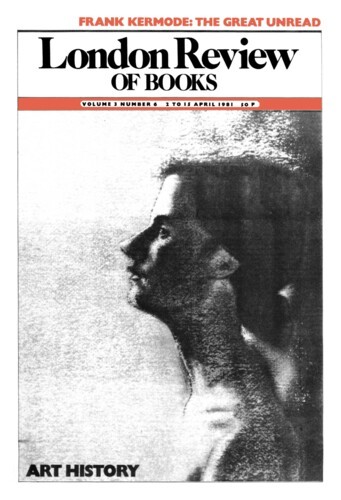Titian’s Mythologies
Thomas Puttfarken, 2 April 1981
If Titian’s reputation were to be assessed by the number and quality of the monographs devoted to him during this century, it would be hard to believe that he was one of the greatest painters of European art history. There are, perhaps, two closely related reasons for this. On the one hand, the crucial element of his art, his treatment of colour, cannot be reproduced in black-and-white illustrations; and, perhaps worse, even the best and technically most advanced colour plates necessarily distort and impoverish the rich harmonics of his colour schemes. On the other hand, the sheer splendour, liveliness and immediacy of Titian’s compositions have seduced generations of art-historians into neglecting the duller, the less exciting aspect of proper art-historical research: the investigation of documents, the search for archival evidence, for contracts, letters etc. Since Crowe’s and Cavalcaselle’s monumental, and still unsurpassed, publication of 1877, biographies of Titian have almost invariably been biographies of his pictorial style.

